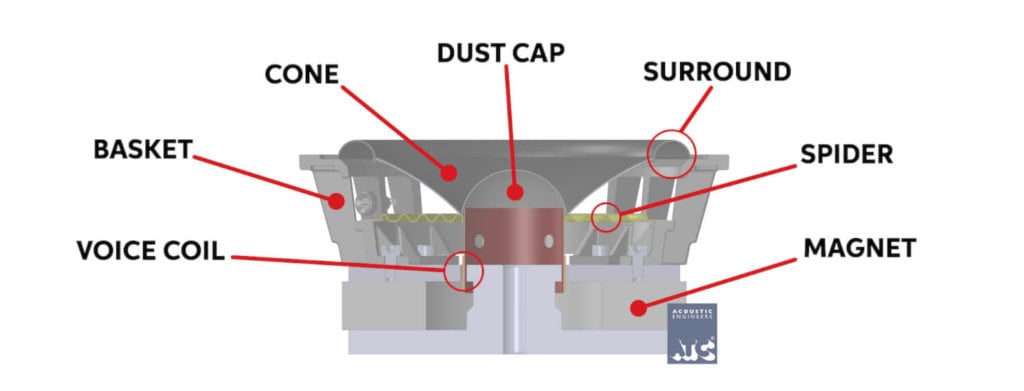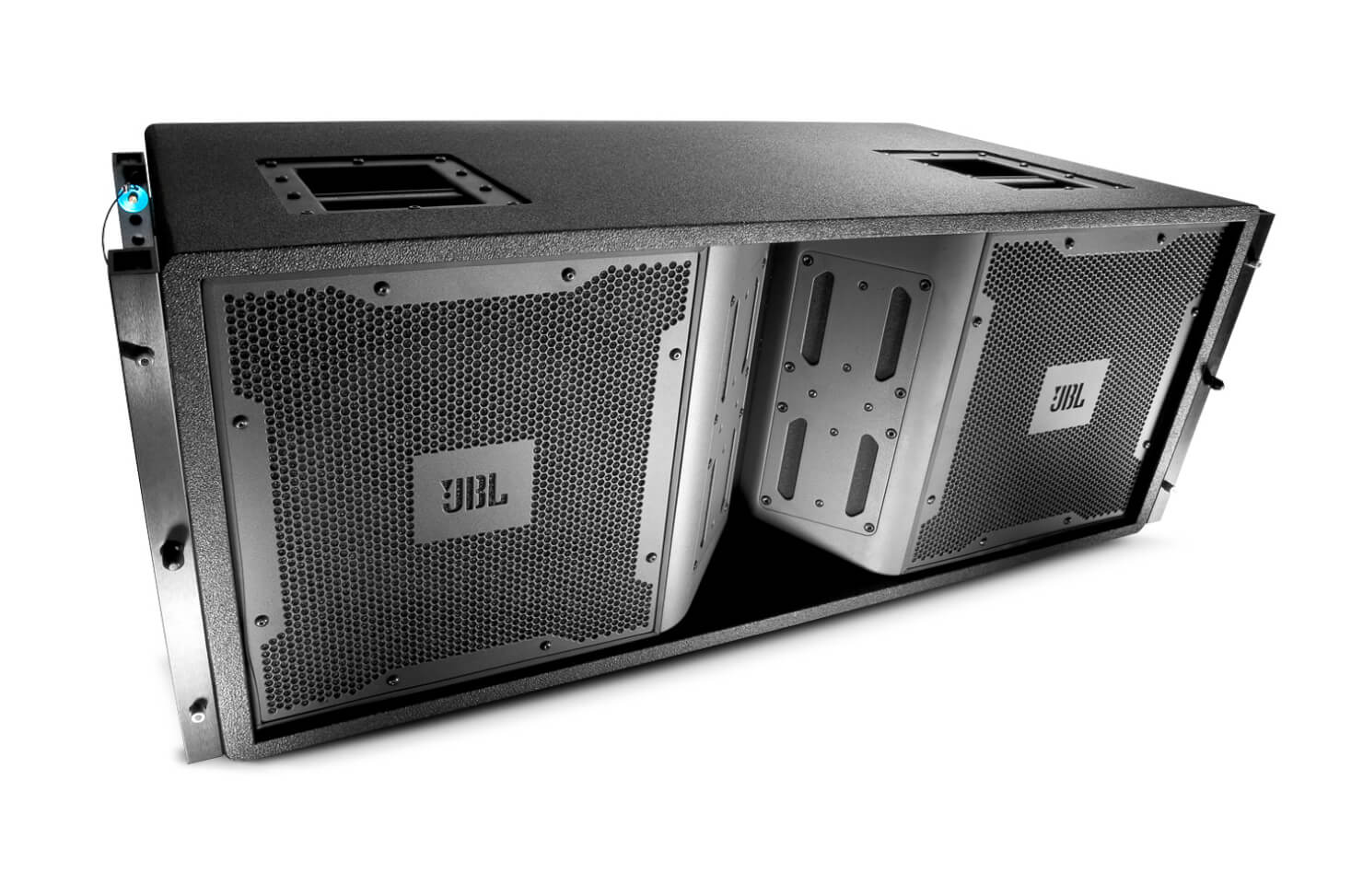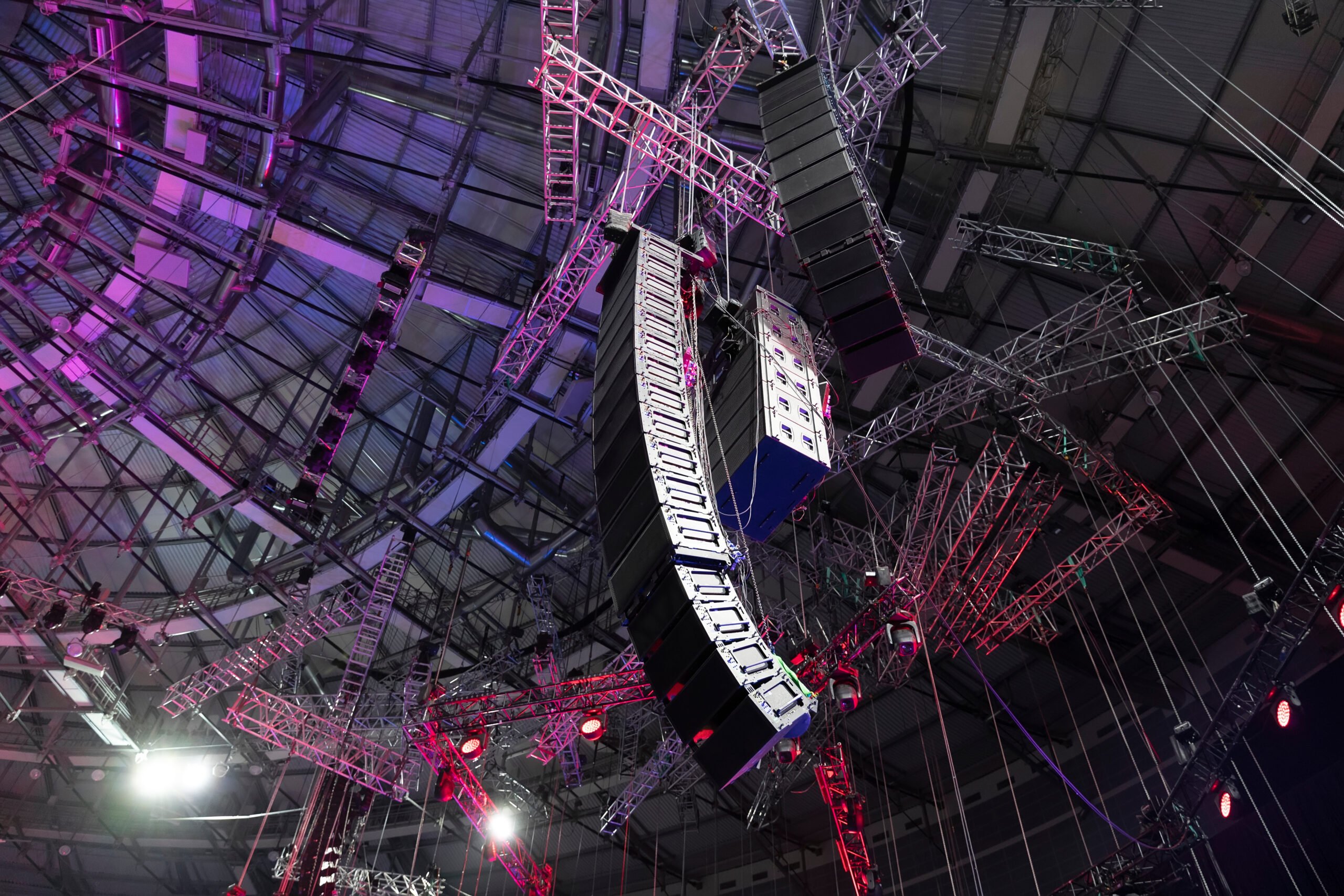Why Magnets Are Used in Speakers
Modern speaker technology is a human marvel. Not only are we able to capture pulses of air (aka “sound waves”) and convert them into electrical signals, but we’re able to turn those electrical signals back into pulses of air that can be heard thousands of yards away. To me, at least, this technology is astounding to think about.
Before these modern electrodynamic loudspeakers came into existence in the 1920s, all we had to amplify sound were large metallic horns attached to Victrola record or wax cylinder players. These relied on the same mechanics that trumpets, tubas, and trombones use—if you flare the end of a tube, the sound from that tube becomes amplified.
These analog mechanics didn’t stand a chance compared to the intensity of amplified electrodynamic loudspeakers. The first functioning model of these speakers was developed by a joint collaboration between C.W. Rice of General Electric and E.W. Kellogg of AT&T in 1921, and since then there have been continuous improvements not only in the specific parts of a speaker, but in its amplification and housing too.
In recent years, some of these developments have been in the speaker’s magnet material, magnet strength, and whether the speaker has a single or double magnet. For loudspeaker customers like production companies or venues, understanding the type of magnets they want in their speakers has become an incredibly important aspect of purchasing new equipment.
But what exactly does a magnet do inside of an electrodynamic loudspeaker, and why is it important? Essentially, these speakers contain a metal cylinder wrapped densely in wire called the “voice coil.” This voice coil is attached to an external cone-shaped material called a diaphragm and suspended inside the important magnetic ring. When we pass an electrical current through the coiled wire of the voice coil, the whole voice coil becomes magnetized. Its new magnetic field causes it to be pushed and pulled through the field of the magnetic ring surrounding it. Since the diaphragm is also attached to the voice coil, it also moves, pushing pulses of air outwards from the speaker. When our eardrums feel these pulses of air, we recognize them as sound waves!
In short, all speaker sound is caused by a electromagnetic field pushing and pulling a voice coil.
As you can probably infer, how strong a speaker’s magnet is can determine that speaker’s power and longevity. If the magnet provides more magnetic strength, or magnetic flux, the voice coil can move farther and faster, producing louder and more nuanced sound. If the magnet is made of a more durable material, it’s likely to survive minor accidents like bumps or drops. That’s why the development of magnet technology has had such a strong influence in the loudspeaker world!
(For a more detailed explanation of the many parts of a speaker and how sound works, check out this great infographic by Animagraffs.)

In the following sections, we’ll go over how each type of magnet affects the sound, quality, and strength of your loudspeakers. First, we’ll cover alnico vs. ceramic magnets for speakers, then we’ll compare these to neodymium magnets. Hopefully, this knowledge will help improve your understanding of our industry’s history and perhaps guide your company’s future speaker purchases!
Alnico Magnet Speakers
Although alnico-magnet speakers are not terribly commonplace within the events industry today, they used to be the standard for all speakers everywhere. Alnico is made of a composite of magnetic metals, namely aluminum, nickel, and cobalt—hence why its name is occasionally stylized AlNiCo, a combination of each metal’s symbol on the periodic table.
In the 1950s, alnico magnets for speakers were quite abundant. However, as the metals which make up these magnets became harder to find, alnico speakers became more expensive to make for speaker manufacturers. Additionally, manufacturers found that alnico was quite fragile, and therefore more prone to breaking, than other magnetic materials.
If you listen to an alnico speaker today, you will likely note its compressed “vintage” tone. However, it likely will not be able to achieve the same intensity as speakers made from other magnetic materials, because the magnetic strength of alnico is relatively low. Since aluminum, nickel, and cobalt still remain relatively rare, though, buying alnico speakers is going to be cost-prohibitive—unless you’re a collector and simply interested in the novelty of these speakers.
Ceramic Magnet Speakers
As the 1960s rolled around, ceramic magnets began being used in speakers as a cheaper and more effective option. These ceramic magnets are traditionally made out of strontium ferrite, a material which loses its magnetic strength less easily than alnico magnets. For that reason, ceramic-magnet speakers don’t have the compressed or limited sound that alnico speakers famously have. Overall, ceramic-magnet speakers’ free-flowing, powerful sound and availability/affordability are what have made it so common to this day.
In the latter half of the 20th century, events production companies and touring bands kept building bigger, louder, and more complex speaker systems, leading to the development of suspended speakers and line arrays. Because of this, the weight of speakers became as important as ever—both for transporting equipment and “flying” rigs. Magnets for speakers, generally speaking, are one of the heaviest components in a speaker, due to the fact that they are made of dense, solid metal. Ceramic strontium ferrite magnets, for instance, are especially heavy.
Therefore, the quest began to find a lighter, but similarly powerful, magnet for speakers. That’s where the neodymium magnet came in.
Neodymium Magnet Speakers
The neodymium magnet is the 21st-century answer to speaker design. Neodymium is an extremely lightweight material with comparable magnetic strength to strontium ferrite or ceramic. In some cases, neodymium magnets can provide 20x the magnetic field as ceramic magnets per unit volume. In the debate between neodymium vs. ceramic magnets in speakers, when it comes to touring and rigging, neodymium clearly wins out.
Popular speaker manufacturers have already been using neodymium magnets for over a decade. For instance, many speakers in JBL’s VerTec line-array series contain neodymium magnets, like the JBL VT4880 neodymium-magnet subwoofer.
However, neodymium magnets can sometimes be quite expensive. Neodymium is a rare-earth metal, and therefore the market for them is quite slim. In fact, ceramic/ferrite magnets can provide 2-3x the magnetic field for each dollar spent compared to neodymium magnets. This is why neodymium is generally reserved for top-of-the-line equipment, especially when it comes to large speakers like subwoofers. A more common and affordable use for neodymium magnets is in smaller speakers, like high-frequency tweeters, where you need a lot of magnetic punch in a small package.
We at Gearsupply hope that this guide has been useful in exploring why and how magnets affect your speakers’ sound! As always, let us know if you have any questions at [email protected]. We’re here to help!
Don’t forget to subscribe to our mailing list using the form below:




